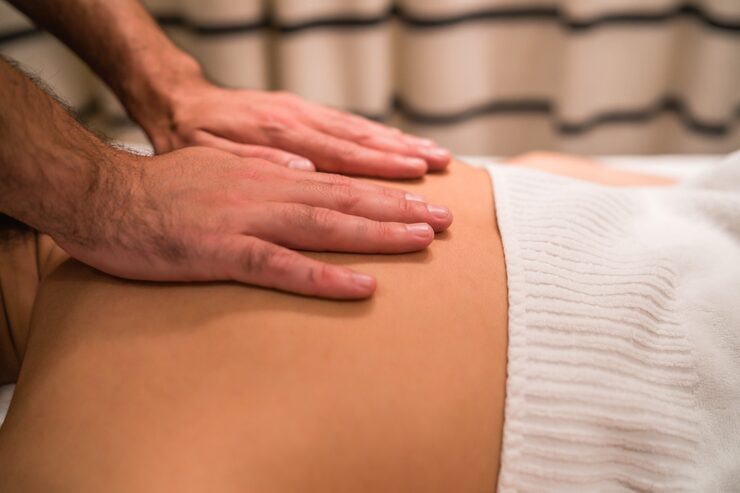Low back pain is one of the top three reasons people call in sick and miss work in the UK, according to the British Pain Society. Like low back pain, other musculoskeletal problems and aches have a huge impact on our society. Given that, we should have a clear, effective plan to deal with them — but the reality is more complicated. Our current health system often lacks the right tools to offer consistent, effective treatments for musculoskeletal pain.
There are several conventional treatment options, but how well do they work? Many people who’ve used the system report limited benefit, and the statistics back that up.

Inside Clinical Massage aims to bridge that gap by offering a reliable treatment option that has been proven effective over the last 15 years by practitioners across the UK. Clinical massage therapy, and specifically the Jing Method — a blend of advanced hands-on techniques combined into a single protocol — has repeatedly shown strong results for people with musculoskeletal pain.
Special mention goes to Jing directors and creators of the Jing Method, Megan Mari and Rachel Fairweather, who studied and combined these techniques into teachable protocols, raising the standard of soft tissue therapy in the UK.
One of the core techniques we use is Trigger Point work. To understand clinical massage, let’s start there.
What is a Trigger Point?
A trigger point is a sensitive, overactive spot within a tight band of muscle fibers (often shown as a small nodule). Trigger points cause pain, stiffness, and reduced function of the affected tissue. They form when muscle fibers get stuck in a contracted state and can’t relax.
Trigger points can be active or latent, and during a clinical massage session we treat both. Active trigger points cause pain and sometimes other symptoms like sweating, dizziness, itching, or ringing in the ears. Latent trigger points don’t cause obvious pain right now but still alter how the tissue behaves and can become active later.
Active trigger points produce pain — often referred pain — in predictable patterns. That means the pain pattern caused by a specific trigger point is usually similar across different people. Dr Janet Travel (1901–1997) discovered these trigger points and mapped their pain patterns. These maps help therapists find the source of pain, and a clinical massage therapist’s skill lies in recognizing and locating these patterns.
For example, the piriformis muscle in the buttock refers pain in a distinct area. When a client shows pain that matches that pattern, we assess and treat that muscle. Other muscles can refer pain to similar areas, so identifying and releasing the right one quickly is where a therapist’s expertise shines — it’s an art as much as a science.
How do we release Trigger Points?
Trigger points respond well to steady, direct pressure held for a short period, usually several seconds. When pressure is applied thoughtfully over time, the contracted fibers let go and the muscle returns to a relaxed state. There are other, more complex techniques too, but steady pressure is one of the most reliable methods.
Tissues respond best to slow, patient work. They also heal more effectively when the therapist helps the client reach a parasympathetic state — deep relaxation — the mode where the body restores and repairs itself. In our fast-paced, stressful lives, we often miss time in this recovery mode, which is why a good clinical massage session is both deeply relaxing and specifically targeted to resolve issues.
Author bio
Rocio Santiago, MA in Nursing, Dip Soft Tissue Therapy
Ro began her career as a nurse. During a difficult period in her life she decided to pause and travel to India, where she took a massage course. That experience set her on a new path toward soft tissue therapy.
She trained at one of Europe’s leading soft tissue therapy schools, completing a three-year, degree-level course and specializing in soft tissue techniques for musculoskeletal pain. Ro has been treating clients as a soft tissue therapist for seven years, successfully addressing a wide range of conditions. Her medical background, interest in anatomy, biochemistry and physiology, and her questioning nature lead to a science-based approach, while her life experience brings a holistic perspective that treats mind and body together.